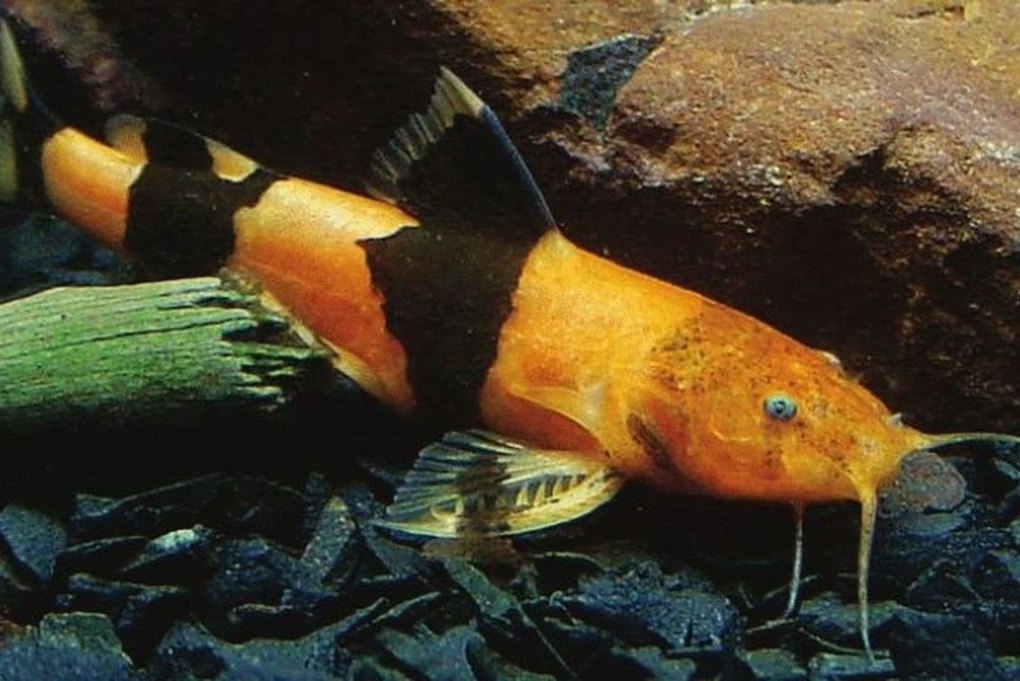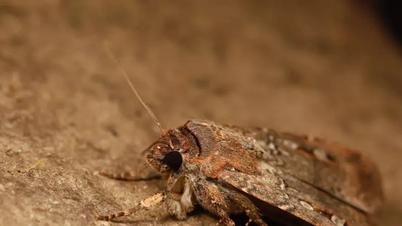Close-up of a school of catfish "giving birth" and climbing a 4 meter high waterfall ( Video : Science Alert).
A rare discovery in the natural world has just been recorded in Brazil, when thousands of bee catfish ( Scientific name: Rhyacoglanis paranensis ) simultaneously passed over a 4 meter high waterfall on the Aquidauana River.
Images of catfish less than 4cm long but still persistently climbing up steep cliffs have led scientists to compare them to "Olympic climbers".
The unusual event was first spotted by local police in the dark of night. Researchers from the Federal University of Mato Grosso do Sul were then immediately present to monitor the phenomenon for 20 consecutive hours.
Direct observation shows that schools of black and orange striped fish gather in dense concentrations, with many even piled up in large clusters to climb over the waterfall's stone steps.
Biologist Manoela Marinho has detailed this strange climbing method. Initially, the small fish spread their fins wide like an anchor to firmly grip the slippery surface, while wriggling their bodies vigorously to push themselves up.
Scientists suspect that the fins of these fish have a suction mechanism that helps them to persevere and advance bit by bit up the steep waterfall. Remarkably, they even climbed onto a bucket of water placed near the waterfall, showing that their instinct to swim upstream is extremely strong.

Special biological mechanisms help bee catfish to overcome steep waterfalls (Photo: Getty).
Analysis of fish samples showed that most of the fish involved in the climb were adults with empty stomachs, suggesting that this was a reproductive migration, similar to the famous salmon migration, which skips feeding during the arduous journey upstream.
Research shows that fasting helps the fish's body focus maximum energy on crossing the rapids, and maintain endurance in harsh environments. Not only that, this also helps reduce the fish's body weight to the maximum.
Marinho and colleagues emphasize that small migratory fishes such as the bee catfish are often overlooked, because their behavior occurs over short periods of time and under specific environmental conditions that are difficult to observe.
However, these rare records are of great value in better understanding the ecological role and need for biodiversity conservation in tropical river ecosystems.
According to scientists, this discovery also raises concerns about the threats facing the small fish. Typically, habitat fragmentation due to hydroelectric dam construction, as well as changes in river flows, are factors that can hinder migration routes, reducing populations.
If this fish disappears, freshwater ecosystems will lose an important link in the food chain and natural balance.
Source: https://dantri.com.vn/khoa-hoc/dan-ca-tre-vuot-can-leo-thac-nuoc-cao-4-met-20250826100249660.htm





![[Photo] Images of the State-level preliminary rehearsal of the military parade at Ba Dinh Square](https://vphoto.vietnam.vn/thumb/1200x675/vietnam/resource/IMAGE/2025/8/27/807e4479c81f408ca16b916ba381b667)


![[Photo] Parade blocks pass through Hang Khay-Trang Tien during the preliminary rehearsal](https://vphoto.vietnam.vn/thumb/1200x675/vietnam/resource/IMAGE/2025/8/27/456962fff72d40269327ac1d01426969)
































































































Comment (0)